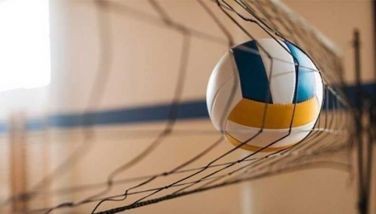+ Follow MICROBIAL Tag
Array
(
[results] => Array
(
[0] => Array
(
[ArticleID] => 654400
[Title] => A truly Pinoy cheese
[Summary] => Filipino cheese makers have to thank Dr. Susana Mercado of the National Institute for Molecular Biology and Biotechnology (UPLB-Biotech) for developing microbial rennet fermented in coconut paring cake.
[DatePublished] => 2011-02-06 00:00:00
[ColumnID] => 133272
[Focus] => 0
[AuthorID] =>
[AuthorName] =>
[SectionName] => Agriculture
[SectionUrl] => agriculture
[URL] =>
)
[1] => Array
(
[ArticleID] => 495131
[Title] => Metagenomics: Studying unculturable microbes
[Summary] => Microorganisms or microbes are often depicted in television commercials as invisible things around us that can cause sickness and therefore must be eliminated by anti-microbial products and disinfectants.
[DatePublished] => 2009-08-13 00:00:00
[ColumnID] => 135735
[Focus] => 0
[AuthorID] => 1446899
[AuthorName] => Laarni Grace Corales and Carlo Miguel Sandoval
[SectionName] => Science and Environment
[SectionUrl] => science-and-environment
[URL] =>
)
[2] => Array
(
[ArticleID] => 385137
[Title] => Microbiologists deal with very small organisms and play crucial roles in our lives
[Summary] =>
Several years ago, the much talked about fatal cases of bloody diarrhea in the US were caused by eating Jack-in-the Box hamburgers contaminated with a bacterium called Escherichia coli strain O157. I heard then US President Bill Clinton, in a television interview, blame a virus for the death of the infected children. Even the US president got confused or was not aware that a bacterium is different from a virus.
[DatePublished] => 2007-02-15 00:00:00
[ColumnID] => 135735
[Focus] => 0
[AuthorID] => 1754908
[AuthorName] => STAR SCIENCE By Cynthia T. Hedreyda, Ph.D.
[SectionName] => Science and Environment
[SectionUrl] => science-and-environment
[URL] =>
)
[3] => Array
(
[ArticleID] => 293803
[Title] => Turn your farm wastes into fertilizer
[Summary] => Farmers would do well by converting their farm wastes quickly into organic fertilizer and, hence, reduce their expenses on inorganic or chemical fertilizer.
This can be done by applying a microbial inoculant developed by PhilRice (Philippine Rice Research Institute) researchers on farm wastes like animal manure, weeds, leaf droppings, crop residues (rice straw) and tree trimmings or clippings.
[DatePublished] => 2005-08-28 00:00:00
[ColumnID] => 133272
[Focus] => 0
[AuthorID] =>
[AuthorName] =>
[SectionName] => Agriculture
[SectionUrl] => agriculture
[URL] =>
)
[4] => Array
(
[ArticleID] => 264119
[Title] => Coating matters in the ‘invisible sea’: Biofilms, marine snow and bioengineering
[Summary] =>
Anyone familiar with biological sewage treatment plants can imagine that marine sediments are not the only sites of organic matter recycling in the sea. The more natural counterpart of activated sludge flocs in seawater is called "marine snow." The high salt content of seawater facilitates adhesion and attachment of microbial cells to interfaces.
[DatePublished] => 2004-09-09 00:00:00
[ColumnID] => 135735
[Focus] => 0
[AuthorID] => 1754883
[AuthorName] => STAR SCIENCE By Wolfgang T. Reichardt, Ph.D.
[SectionName] => Science and Environment
[SectionUrl] => science-and-environment
[URL] =>
)
[5] => Array
(
[ArticleID] => 203118
[Title] => Making your own fertilizer in 1-2 weeks
[Summary] => Researchers of the Philippine Rice Research Institute (PhilRice) in Maligaya, Muñoz, Nueva Ecija have formulated a microbial inoculant that can process biodegradable kitchen wastes into fertilizer in one to two weeks.
[DatePublished] => 2003-04-20 00:00:00
[ColumnID] => 133272
[Focus] => 0
[AuthorID] =>
[AuthorName] =>
[SectionName] => Agriculture
[SectionUrl] => agriculture
[URL] =>
)
)
)
MICROBIAL
Array
(
[results] => Array
(
[0] => Array
(
[ArticleID] => 654400
[Title] => A truly Pinoy cheese
[Summary] => Filipino cheese makers have to thank Dr. Susana Mercado of the National Institute for Molecular Biology and Biotechnology (UPLB-Biotech) for developing microbial rennet fermented in coconut paring cake.
[DatePublished] => 2011-02-06 00:00:00
[ColumnID] => 133272
[Focus] => 0
[AuthorID] =>
[AuthorName] =>
[SectionName] => Agriculture
[SectionUrl] => agriculture
[URL] =>
)
[1] => Array
(
[ArticleID] => 495131
[Title] => Metagenomics: Studying unculturable microbes
[Summary] => Microorganisms or microbes are often depicted in television commercials as invisible things around us that can cause sickness and therefore must be eliminated by anti-microbial products and disinfectants.
[DatePublished] => 2009-08-13 00:00:00
[ColumnID] => 135735
[Focus] => 0
[AuthorID] => 1446899
[AuthorName] => Laarni Grace Corales and Carlo Miguel Sandoval
[SectionName] => Science and Environment
[SectionUrl] => science-and-environment
[URL] =>
)
[2] => Array
(
[ArticleID] => 385137
[Title] => Microbiologists deal with very small organisms and play crucial roles in our lives
[Summary] =>
Several years ago, the much talked about fatal cases of bloody diarrhea in the US were caused by eating Jack-in-the Box hamburgers contaminated with a bacterium called Escherichia coli strain O157. I heard then US President Bill Clinton, in a television interview, blame a virus for the death of the infected children. Even the US president got confused or was not aware that a bacterium is different from a virus.
[DatePublished] => 2007-02-15 00:00:00
[ColumnID] => 135735
[Focus] => 0
[AuthorID] => 1754908
[AuthorName] => STAR SCIENCE By Cynthia T. Hedreyda, Ph.D.
[SectionName] => Science and Environment
[SectionUrl] => science-and-environment
[URL] =>
)
[3] => Array
(
[ArticleID] => 293803
[Title] => Turn your farm wastes into fertilizer
[Summary] => Farmers would do well by converting their farm wastes quickly into organic fertilizer and, hence, reduce their expenses on inorganic or chemical fertilizer.
This can be done by applying a microbial inoculant developed by PhilRice (Philippine Rice Research Institute) researchers on farm wastes like animal manure, weeds, leaf droppings, crop residues (rice straw) and tree trimmings or clippings.
[DatePublished] => 2005-08-28 00:00:00
[ColumnID] => 133272
[Focus] => 0
[AuthorID] =>
[AuthorName] =>
[SectionName] => Agriculture
[SectionUrl] => agriculture
[URL] =>
)
[4] => Array
(
[ArticleID] => 264119
[Title] => Coating matters in the ‘invisible sea’: Biofilms, marine snow and bioengineering
[Summary] =>
Anyone familiar with biological sewage treatment plants can imagine that marine sediments are not the only sites of organic matter recycling in the sea. The more natural counterpart of activated sludge flocs in seawater is called "marine snow." The high salt content of seawater facilitates adhesion and attachment of microbial cells to interfaces.
[DatePublished] => 2004-09-09 00:00:00
[ColumnID] => 135735
[Focus] => 0
[AuthorID] => 1754883
[AuthorName] => STAR SCIENCE By Wolfgang T. Reichardt, Ph.D.
[SectionName] => Science and Environment
[SectionUrl] => science-and-environment
[URL] =>
)
[5] => Array
(
[ArticleID] => 203118
[Title] => Making your own fertilizer in 1-2 weeks
[Summary] => Researchers of the Philippine Rice Research Institute (PhilRice) in Maligaya, Muñoz, Nueva Ecija have formulated a microbial inoculant that can process biodegradable kitchen wastes into fertilizer in one to two weeks.
[DatePublished] => 2003-04-20 00:00:00
[ColumnID] => 133272
[Focus] => 0
[AuthorID] =>
[AuthorName] =>
[SectionName] => Agriculture
[SectionUrl] => agriculture
[URL] =>
)
)
)
abtest
February 6, 2011 - 12:00am
August 28, 2005 - 12:00am










